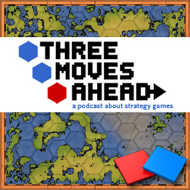This month’s PCGamer has a lot of interesting stuff in it. The hardware section has a review of an item that lets you control parts of a game with your mind. Brett Todd unveils his five commandments of mod-making. Desslock sings the praises of open world RPGs while backpage columnist Ben Croshaw asks for a little more guidance in his role playing experiences.
On the strategy side, Dan Stapleton has a hands-on preview of the upcoming Colonization update, billed on the cover as an Exclusive Announcement. Sorry guys, but that announcement is weeks old now. And when you’re the only PC gaming magazine in business, getting an exclusive isn’t all that special any more. Still, it’s a great preview that reads a lot like a classic Colonization AAR, so the game will clearly be more of an update than a do-over.
Dan Stapleton’s strategy column is a bit of a puzzle. He’s an unabashed RTS guy, so he seems almost apologetic in writing a column about turn based strategy games. He promises that some are in development. But then, he writes something like this:
I’m not talking about the constant stream of low budget European imports published by Matrix Games. Not that Matrix doesn’t occasionally have its gems, but those games do tend to lack the polish needed for mainstream appeal.
Matrix published games certainly do not have mainstream appeal, but then they are wargames and not what you would usually consider turn based strategy anyway. But I’m not sure what he means by a “constant stream of low budget European imports.” Over the last couple of years, there are very few of these unless you count the repackaging of old Slitherine games or the first Democracy, which are very accessible. Is he thinking of a couple of AGEod games? The Western Civilization games (Crown of Glory and Forge of Freedom) are not European. And the Panzer Command games are just prettier Combat Mission clones; there was a time when that was mainstream. So either I’m missing something or Stapleton is thinking of somebody else.
I applaud Stapleton for putting Empire: Total War in the turn-based category (I’ll win this fight yet!), but I wish the column had spent more time talking about the changing place of TBS gaming instead of cobbling together what still looks like a pretty feeble list of games: Another Sid Meier game, GalCiv and whatever else Stardock is doing.
There is still a lot of turn based strategy gaming, but, like the Total War series, it’s taking place in a hybrid environment. Think of all the RTSes in the last couple of years that have included “conquer the world” campaign settings to link real time skirmishing. Plus the continuing HoMM series and the upcoming Disciples III. The magazine probably went to print before the announcement of Cryptic Comet’s Solium Infernum, but that’s also a bit outside the mainstream.
I feel sort of bad about mentioning Stapleton’s column only to complain about it; that’s how blogging seems to work most of the time. I will say that I have really enjoyed his work for the most part, and I’m completely on his side regarding the issue of speed in a real time strategy game. (He replies to a cranky reader in the letters section.) He’s a good writer with good taste, but he could use a slightly broader perspective, and even play a positive role in bringing non-mainstream games to people’s attention. I think that a lot of PCG readers would enjoy Napoleonic Campaigns, low budget and all.

